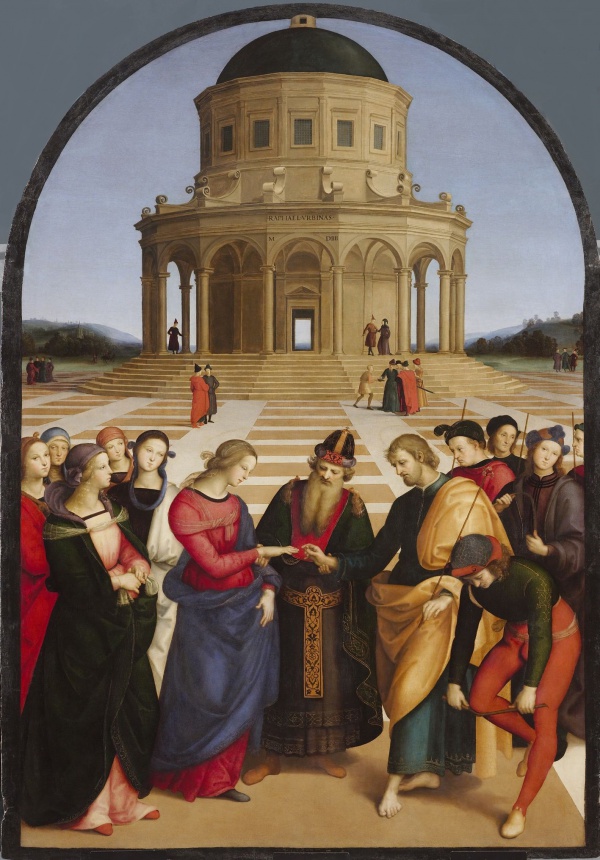Facts About The Marriage of the Virgin
"The Marriage of the Virgin" also known as "Lo Sposalizio" is a magnificent oil painting by the illustrious Italian High Renaissance artist Raphael. Completed in 1504, this masterpiece was originally commissioned for the Franciscan church of San Francesco in Città di Castello. It exquisitely depicts the marriage ceremony of Mary and Joseph.
The painting has an intriguing history. Raphael created it as part of a trio of commissions intended for his mentor, Pietro Perugino, in the late 15th century. Historians have debated whether Perugino's version preceded Raphael's. Evidence suggests that Perugino commenced his work around 1499. The commission originated from Filippo degli Albezzini for a church dedicated to Saint Francis.
Over the years, "The Marriage of the Virgin" changed hands several times. It was seized by General Giuseppe Lechi and eventually sold to the Ospedale Maggiore in Milan in 1804. In 1806, the Italian state acquired the painting for 53,000 francs, and since then, it has been proudly exhibited at the Pinacoteca di Brera in Milan.
The painting did not escape unscathed during its numerous relocations, suffering from cracks and ripples on its panel. Fortunately, in 1857, Italian artist Giuseppe Molteni undertook its restoration, meticulously preserving the original panel and cleaning the surface without using harsh methods. This restoration was so adeptly executed that it enabled 20th-century art historians to study the underdrawing beneath the painting. Despite some discoloration, the artwork clearly reveals Raphael's evolving style, distinguishing him from his teacher, Perugino. Even Giorgio Vasari, a 16th-century Italian artist, recognized this progression.

 Switzerland
Switzerland